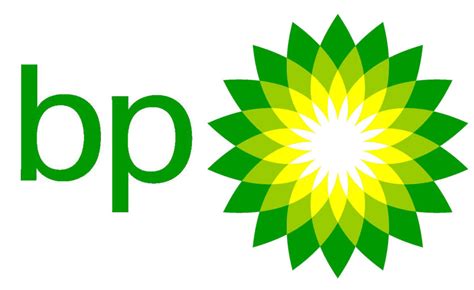BP today followed its hydrocarbon ‘sister’ Shell last week in announcing record sky-high profits, renewing politicians’ calls for a reluctant chancellor to impose windfall tax benefitting consumers soon to face rocketing energy bills.
The oil giant posted profits for calendar 2021 of $7.6 billion, a third of it secured in last year’s final quarter, as gas quadrupled in price on world exchanges.
Last year Covid and lockdowns imposed record losses of $ 20.3 billion on the oil leviathian. By division, gas and oil production roller-coastered giddily last year to a $10.5 billion profit, reversing 2020’s losses of $14.6 billion. Profits attributable from Rosneft, BP’s Russian joint venture, posted positive at $2.25 billion, against 2020’s red ink of $ 0.15 billion.
Liberal Democrat leader Sir Ed Davey repeated on BBC radio this morning that it was a matter of fairness that North Sea operators should pay a greater share in tax.
With investors eager to boost renewables, he said a one-off levy would have negligible effect in deterring clean energy investment.
A mainstay of millions of investment portfolios from small savers to pension and insurance companies, BP today announced it would further enrich shareholders. Funded with 60% of its ‘surplus’ cashflow earned in 2021, it will buy back a further $1.5 billion of shares, in a scheme triggered by the firm trimming net debt to $35 billion last year. The scheme will complete a total of $4.15 billion of share buybacks announced.
By late morning the LSE had marked BP’s shares up 0.5%, valuing the behemoth at $80.32 billion.
Under chief executive Bernard Looney, the globe-spanning company has since 2020 been seeking to wean itself off hydrocarbons, by investing in schemes such as blue hydrogen production on Teesside.
“2021 shows BP doing what we said we would – performing while transforming”, Looney tells investors this morning.
“We’ve strengthened the balance sheet and grown returns. We’re delivering distributions to shareholders ..and we’re investing for the future.
“We’ve made strong progress in our transformation to an integrated energy company: focusing and high grading our hydrocarbons business, growing in convenience and mobility and building with discipline a low carbon energy business”, the CEO writes.
The greening of BP
Carbon neutrality by 2050 across all the oil extractor’s operations, products and their uses is the firm’s over-riding goal. Interim goals are being brought forward too, Looney announces today in an accompanying progress report:
- By 2030, emissions from direct operations will now halve, compared with an earlier aim of 35%
- By 2050 or sooner, BP now aims to eliminate emissions over the lifecycle of the energy products it sells. Previously it aimed for a 50% cut only in their emissions intensity.
- Additionally, the aim’s remit will expand to include physically traded energy products. For 2030, BP seeks a 15% to 20% reduction in their lifetime carbon intensity.
In low carbon energy, BP says its development pipeline has grown since 2019 from 6GW to 24.5GW. Offshore wind, including recent success in the ScotWind leasing round accounts for 5.2GW.
With “disciplined” annual capital expenditure in renewables planned to grow to as much as $6 billion, BP is aiming for EBITDA of up to $3 billion by 2030.
CEO Bernard Looney said: “We are accelerating the greening of BP. Our confidence is growing in the opportunities that the energy transition offers. This allows us to raise our low carbon ambitions, and we are now aiming to be net zero across operations, production and sales by 2050 or sooner – unique among our peers. In a world heading for net zero, we’re best positioned for success if we are also heading for net zero. We believe our ambition is both good business and supports society’s drive towards the Paris goals.”
But observers point out that, by decade’s end, the company will be still spending as much or more every year on legacy hydrocarbons. And today’s statements fail to distinguish low carbon ‘green’ hydrogen, electrolysed from water with the sun’s or wind’s renewable power, and its dirtier ‘blue’ variant, chemically ‘scrubbed’ or steam re-formed from oil or gas.
“BP sees both renewables and hydrogen as transition growth engines”, the firm states. It claims to be on track to develop 20GW in clean generation capacity by 2025, with 50GW set for 2030. BP remains confident of achieving 8-10% levered returns for its low carbon clean investments.
BP’s portfolio of hydrogen ventures serving what it calls ‘advantaged markets’ can potentially produce between 0.7 and 1.3 million tonnes per year. More financial value should be created in integrating the synthesised gas with renewables and CCS.





BP should be congratulated in “seeing the writing on the wall” that they are an energy supplier, not just an oil and gas supplier, by investing heavily in zero fossil carbon energy supplies to transform the company. The $ 7.6 billion for 2021 is the gross profit, not the net profit (or EBITDA) and will be used to make these green investments that the world needs, as well as reducing BP’s debt which is prudent to improve its credit rating. While blue hydrogen is not completely fossil-free energy, it is a necessary stepping stone to having only fossil free hydrogen by 2050. Sir Davey needs to consider the unintended consequences of taking money away from BP that will slow their conversion to a clean energy supplier. We all need to accept that we will be paying more for our fossil energy to support investment in new green energy technology and must support those who cannot afford the extra cost. Disclosure: I have no financial interest in BP or Shell.